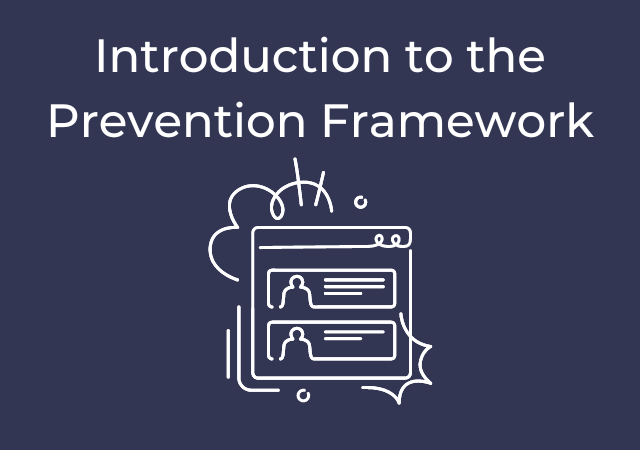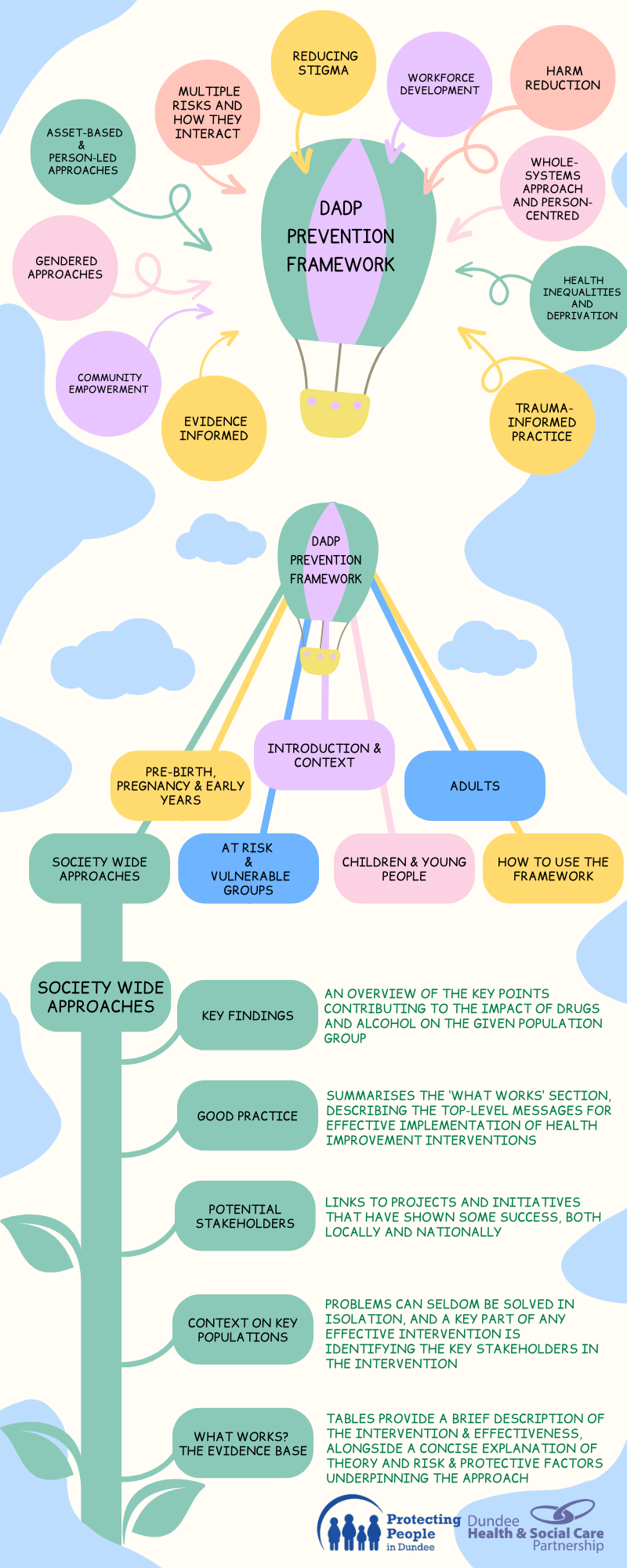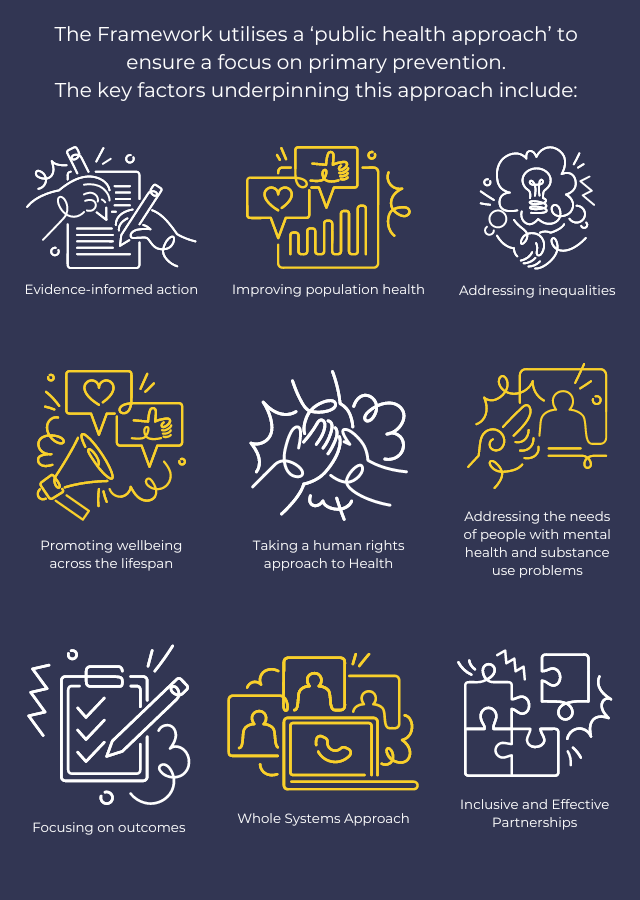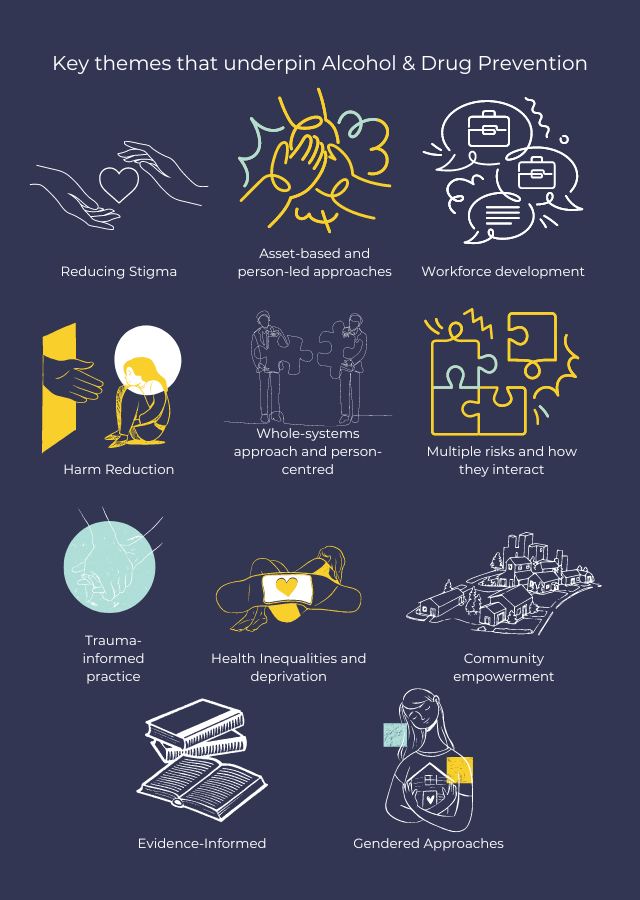The Dundee Alcohol and Drug Prevention Framework is designed as a complement to ADP-level strategy development and action-planning. The core of the content is a series of Evidence Briefings, each providing a summary of current evidence of effective practice, packaged with appropriate literature review material. The core research and evidence base has been taken from the Greater Glasgow and Clyde (GGC) Alcohol and Drug Prevention Framework evidence briefings. The group has worked with GGC Public Health colleagues who have offered a wealth of detail and allowed the group to utilise their learning to optimise the development of a prevention framework with a Dundee context.
The Prevention Framework, is designed to be a flexible, updatable resource that will be hosted online, to easily share on-going developments, evidence-based updates and good practice across Dundee, Tayside and beyond.
The key purposes of the framework can be summarised as follows:
- To support the advancement of evidence-based, high-quality practice in prevention and harm reduction in the field of alcohol and drugs
- To promote comprehensive planned approaches, including considering and acting on needs across the full life-course and considering differing groups and settings
- To aid in identifying both strengths in current areas of multi-partner working and identify gaps in collective responses
- To highlight the importance of identifying and addressing inequalities and equalities considerations in the alcohol and drugs agenda. This includes upstream thinking on root causes of alcohol and drug use
- To further emphasise the need to develop and deliver effective harm reduction approaches as critical components of the overall alcohol and drugs public health response
- To stimulate additional activity from partners in terms of monitoring, evaluation and research in order to further grow the evidence-base for prevention and harm-reduction approaches
- To complement pre-existing activity and prevention planning by helping to identify good practice, highlighting additional evidence-based approaches and helping to identify gaps and development opportunities



